Below is an excerpt from an expert tracker, Jonathan Poppele. He wrote the book, Animal Tracks: Midwest Edition:
“Tracking is the study and interpretation of the footprints and other signs left behind by animals as they go about their lives. Tracking does not necessarily mean following a string of footprints to locate the animal that made them. It means understanding the footprints, scrapes, chews, digs, and scat that we inevitably run across when we are out in nature. Tracking begins with identifying the animal that left the tracks and signs behind for us to see, and grows into an understanding of the intimate details of that animal’s life.”
Animal Tracks Gallery
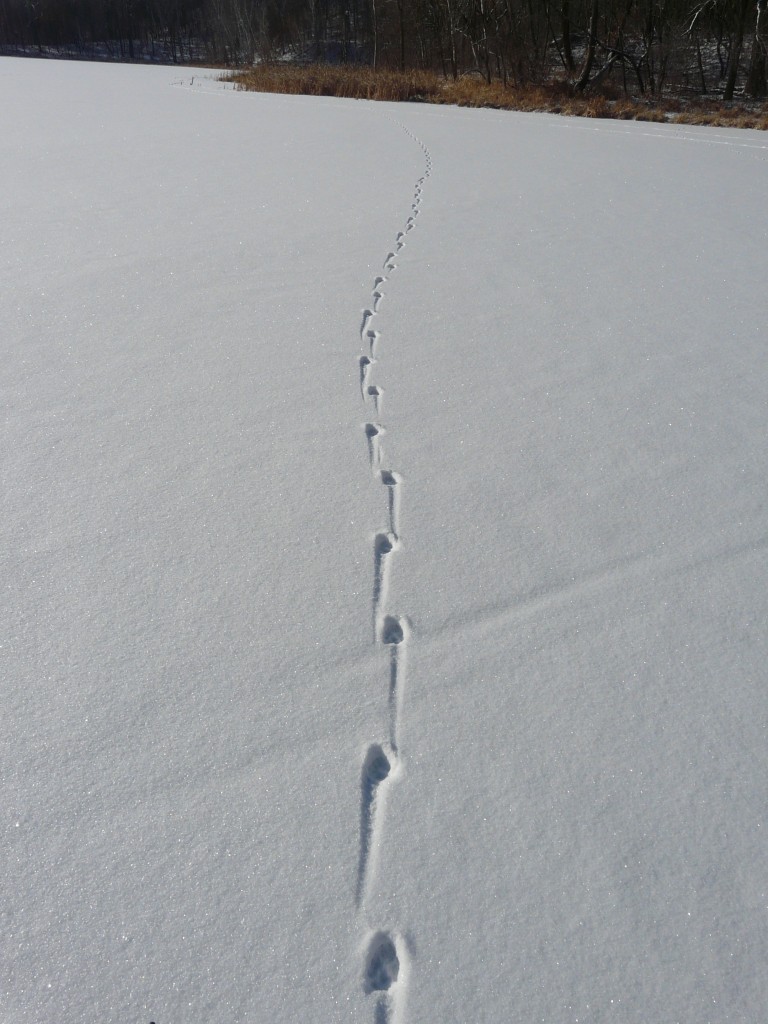
fox walking pattern. The animal is registering – meaning that the hind foot steps in the front foot track. Animals who register are trying to conserve their energy.
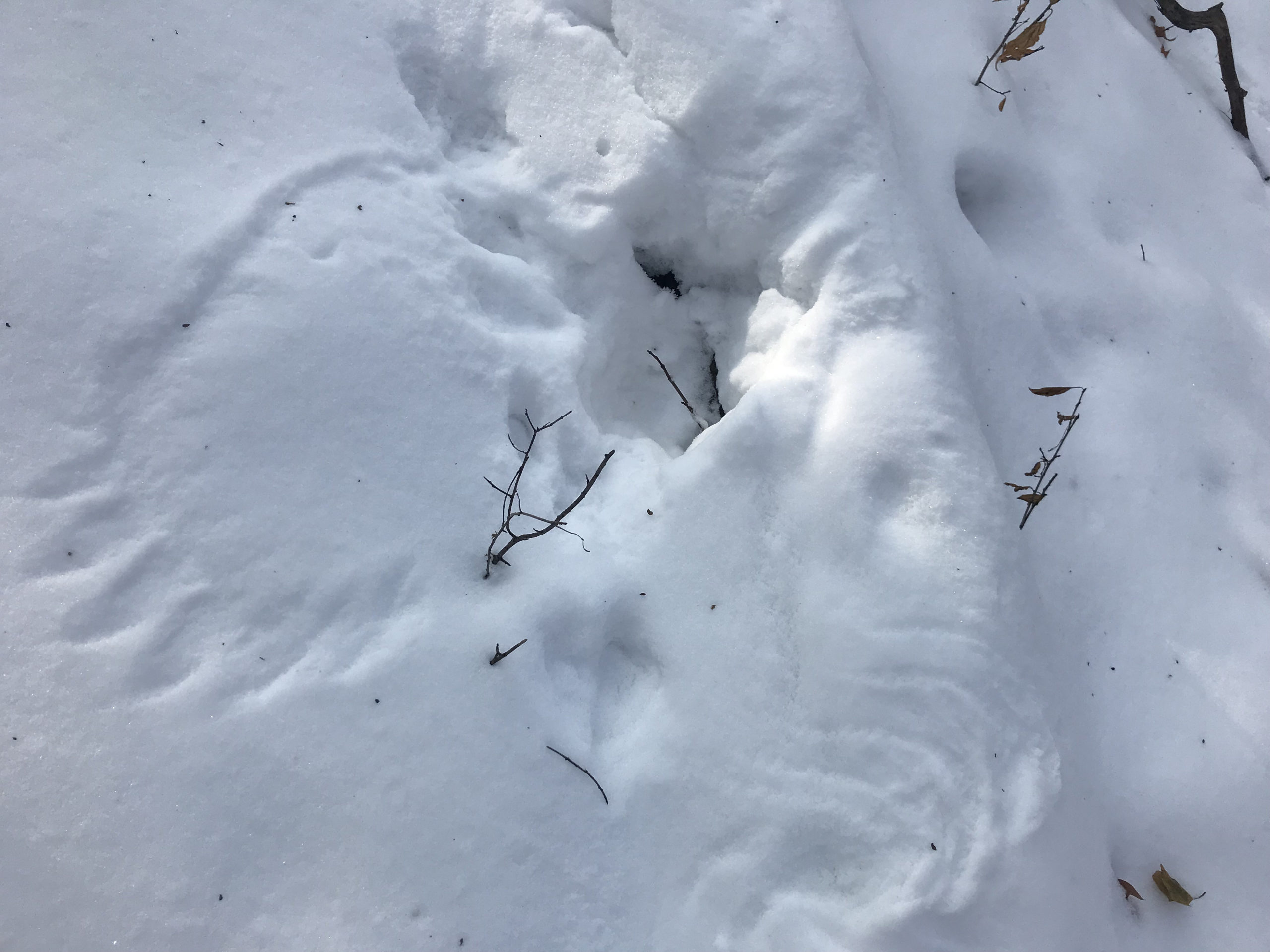
Owl making an attempted to kill a mouse. The left wing is on the left – tail is below and head is above. photo by Lawrence Wade

Crow Wing prints in the snow. The bird must have been flying low, but did not land.
photo by Lawrence Wade
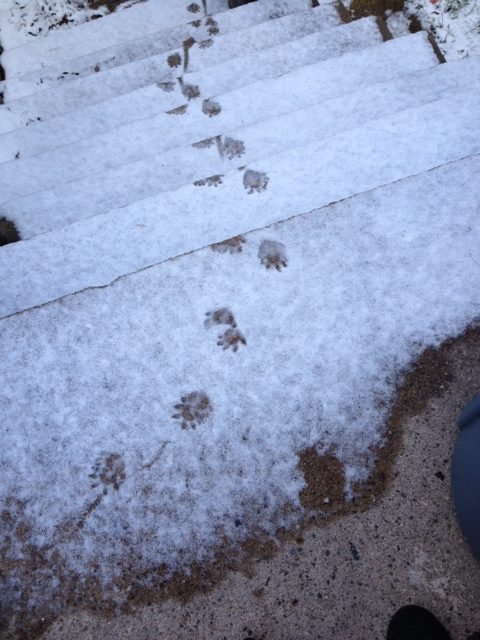
Opossum Tracks w/ tail drag
photograph by Faith Frankel, Boonton, NJ.
Faith said that she lives in town and the opossum lives somewhere in her yard.
Animal Tracking Tutorial 101
In winter, studying animal tracks will give you a lot of information about who is active in your area. The best snow depth to read animal tracks is 1-4 inches. When there is more snow, it is difficult to see the patterns that each animal leaves. Tracking is all about looking at patterns and knowing where an animal is most likely to be found.
There are three basic groups of track patterns to learn.
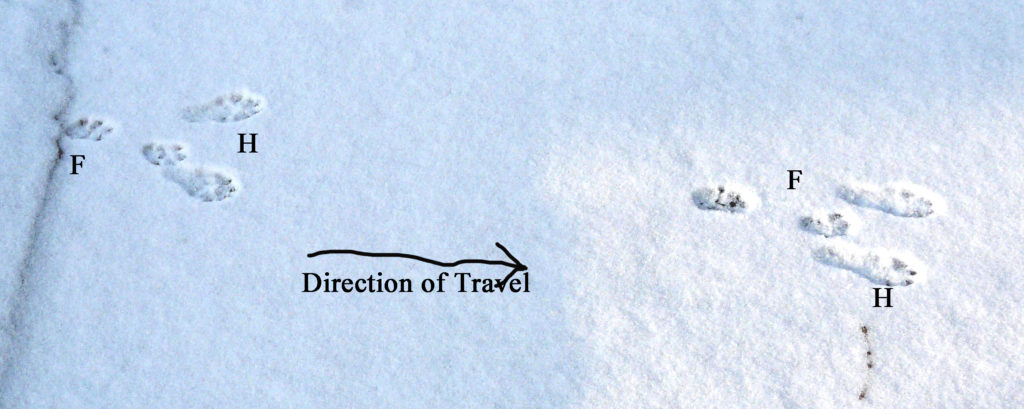
Rabbit Bounding Track
“F” is the smaller front foot. They hit the ground first.
“H” is the larger hind foot which jumps over the front feet.
Photo by Lawrence Wade

Squirrel Tracks – often end at a tree
“F” is the front foot which hits the ground first
“H” is the larger hind foot which hops over the front foot.
2. Walkers – “big foot” and “little foot”
In identifying the three species below, the important things to look for is the size of the track and the position of the front foot and the hind foot. Also, the beaver and muskrat are only found in wetland areas, whereas raccoons are found in many different habitats including wetlands.![]() In all cases the hind foot is larger than the smaller front foot.
In all cases the hind foot is larger than the smaller front foot.


Raccoon tracks
The arrow shows the direction of travel
“H” shows the larger hind foot
“F” shows the smaller front foot
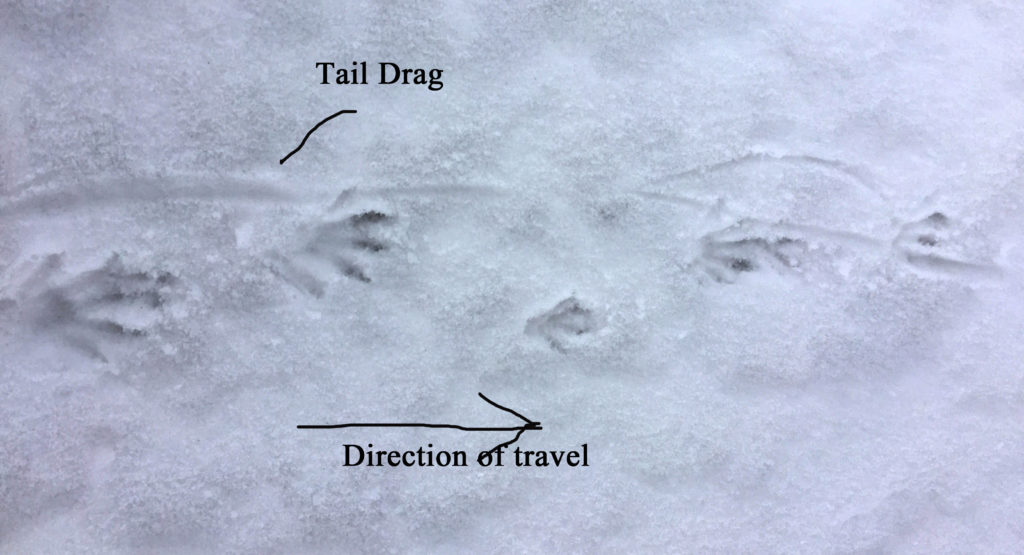
muskrat Tracks
Muskrats rarely leave their huts in the winter, unless they run out of food or the population is too high. Photo by Lawrence Wade
3. Straight-line walkers
Both deer and fox step with the hind foot falling exactly in the track of the front foot. Thus, the pattern in the snow appears that the animals are two-legged. This behavior is called “registering”and it helps the animal to conserve energy when walking in deep snow.

After you determine whether it is a hopper, straight line walker, or a “big foot-little foot”, Look at the pattern closely and notice how many inches there are between tracks or clumps of tracks. Also, think about the habitat you are seeing the tracks. Some animals are restricted to certain habitats (ie beaver, mink, and muskrat are found in wetlands).
Foxes leave a neat pattern in the snow because the hind foot steps in the front foot track (registering). Registering helps a fox to conserve energy, when walking in deep snow. It’s cousin, the dog, does not register and leaves a much sloppier track.  Deer also register, with the hind foot walking in the front foot track. Also, a deer hoof is easy to see when the snow is packed, and they usually drag their hooves. However, in deep snow, the hooves are more spread out and the dew claw is visible in the back of the track.
Deer also register, with the hind foot walking in the front foot track. Also, a deer hoof is easy to see when the snow is packed, and they usually drag their hooves. However, in deep snow, the hooves are more spread out and the dew claw is visible in the back of the track.
Expert tracker and author, Linda Spielman, made the following comment about mink:
Larry, I see that you have put the mustelids (weasel family) in the section with the straight-line walkers, but they don’t belong there. Sometimes mink are more like the hoppers but at other times they lope or gallop like deer and dogs. Mink are known to walk, but not very often. Maybe you need a fourth category.
Resources
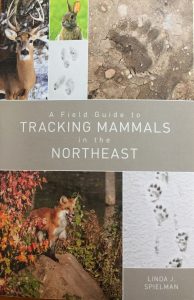 A Field Guide to Tracking Mammals in the Northeast
A Field Guide to Tracking Mammals in the Northeast
by Linda J. Spielman
Paperback, published by Countryman Press, released July 4, 2017 192 pages, 6 X 9 inches
ISBN-13: 978-1682680643
My book contains between 6 and 12 drawings for each of 40 species, each drawing meticulously and accurately copied from one or several photographs.
Each species treatment also includes written sections that discuss important details and point out differences and similarities between different species. Gait patterns can be as important as individual tracks for identification, so the typical gaits for each species are illustrated with diagrams and explained in written discussions. Measurements are given for tracks and gaits, and there is also a short section on habitat, sign, and scat.
By focusing on the tracks themselves and limiting other topics I was able to produce a book that is easily carried in a day pack and yet remarkably comprehensive. My book arises out of my own experience tracking northeastern mammals, but the approach will be beneficial for trackers in any region. A Field Guide to Tracking Mammals in the Northeast is available from major booksellers. I can also ship it directly to you. You can send a check for $15.66 ($13.00 + $2.66 media mail) to Linda Spielman, PO Box 955, Dryden, NY 13053. I welcome your comments; visit www.lindajspielman.com, or contact me at lindajspielman@gmail.com.
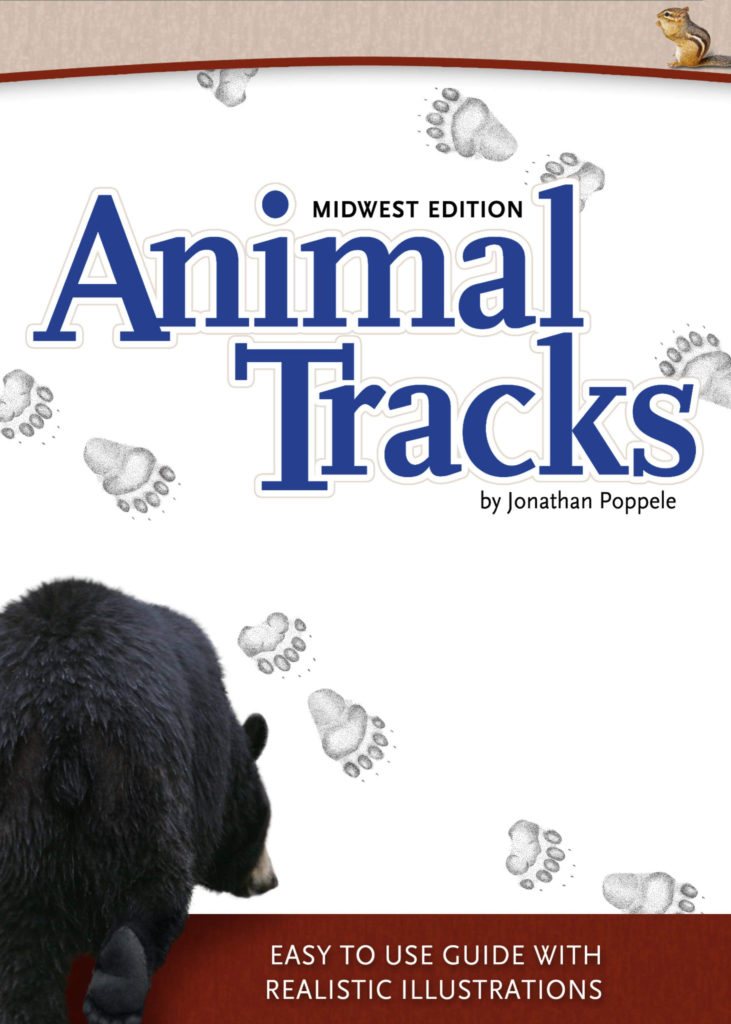 Animal Tracks: Midwest Edition
Animal Tracks: Midwest Edition
by Jonathan Poppele.
Published by Adventure Publications
$14.95
Animal Tracks: Midwest Edition is a pocket sized guide to the tracks and sign of Midwestern mammals. Excellent illustrations and quick identification tips help you get started. Track pattern illustrations, scat photos and descriptions of other signs that animals leave behind provide more clues to help to with identification. The information is easy enough for beginners yet detailed enough for experienced trackers.
Praise for Animal Tracks: Midwest Edition
“There are many great guides to identifying animal tracks. A few are truly excellent and some others are surprisingly misleading. Animal Tracks: Midwest Edition by Jonathan Poppele is a book that surprised me. It has fantastic track drawings, accurate information, and a very smart organization method. This book is inexpensive and worth adding to your library.”–Jonah Evans, tracking expert and State Mammalogist for Texas Parks and Wildlife.
The book is widely available at State Parks, Wildlife Refuges, major book sellers, and online book sellers. The Second Edition is scheduled for release by January 2021. Readers can order directly from the publisher, Adventure Publications 1-800-678-7006.

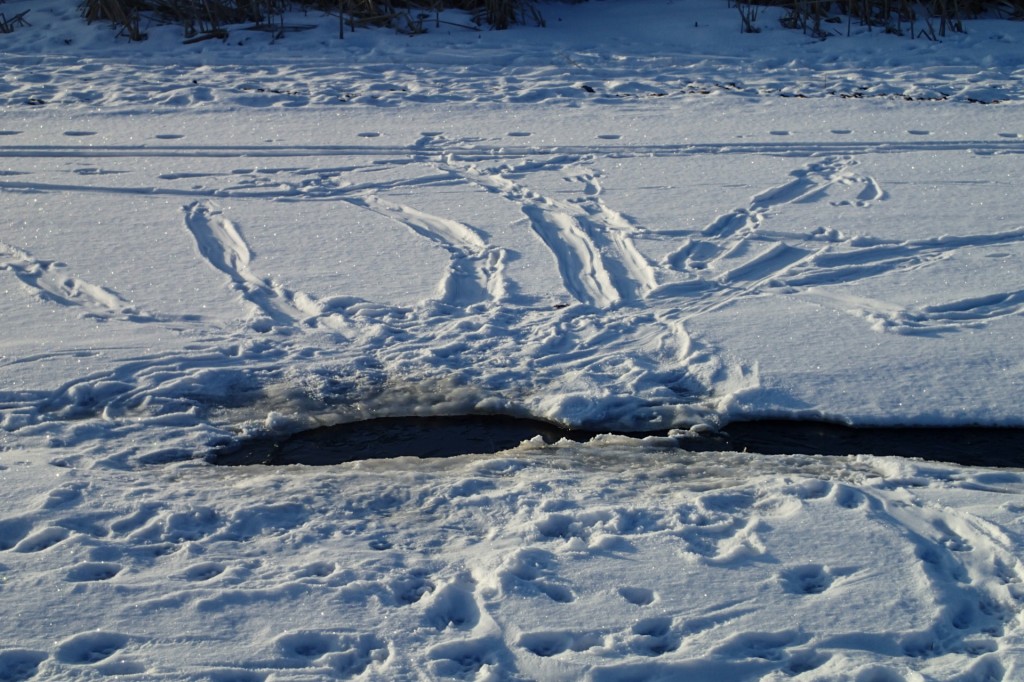

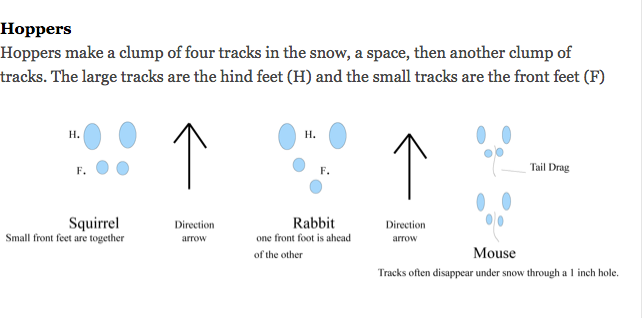
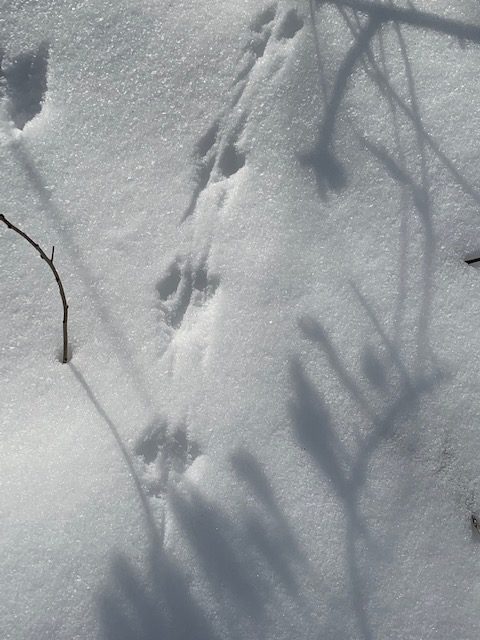

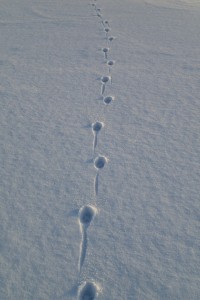
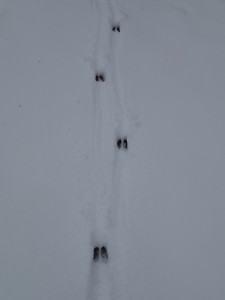

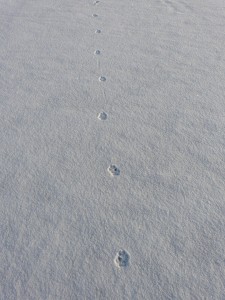
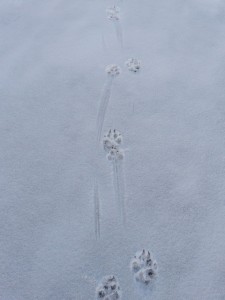
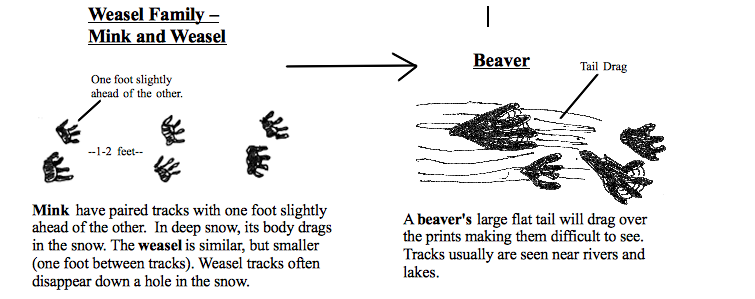
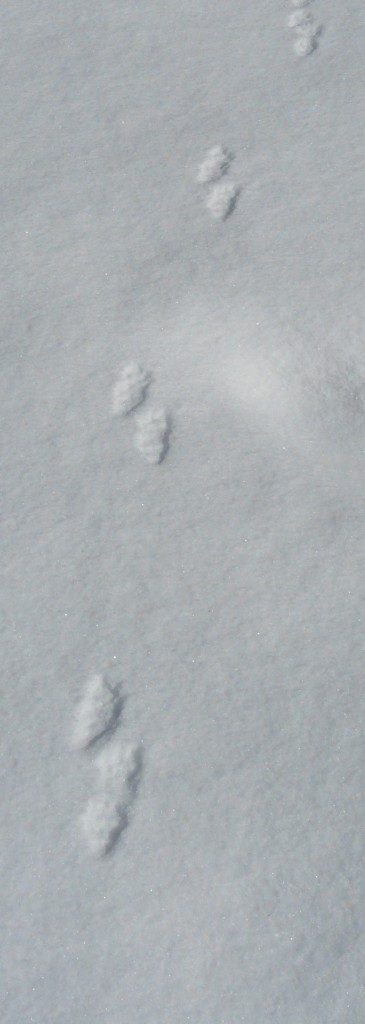



Hello. I found these tracks in my yard this morning. Could you please they’re River Otter tracks? I live on Hood Canal, Washington, and there are Otters in the water here from time to time. Thank you and Happy New Year!
Very Nice animal tracking post. I enjoy finding stories in the tracks, and those of your bird touch-downs were great! Sometimes we have to think awhile to figure out what has taken place, and what a wonderful activity to share with kids when we walk the winter trails.
Angie:
So thoughtful and connected to nature.It is a gift.
Thank you, Larry for helping us reach closer to understanding the s-t-o-r-y playing out in the beauty of the snow! Your pictures helped answer questions I’ve wondered about and give a way to help organize/sort. I’m going to share some of your pics with my 3rd graders during morning message tomorrow as I inquire what they enjoyed doing this snowy weekend!
Natasha: I hope those will kids will be inspired to go outside and even ID a squirrel or a rabbit. That would be a real gift to them. I saw the sliding tracks of an otter today at the creek. Even though there wasn’t an otter there, I could feel its presence in the tracks.
I love the crow photo. Thank you as always learn much. My favorite animal tracking was when the baby snappers hatch about the time kids start school. I actually thought rocks were moving under my feet.
Thank you Grace. That is a great story. The photo of the crow making a crash landing the snow, I took at Gatewood School (where Grace’s kids went to school (many years ago)).